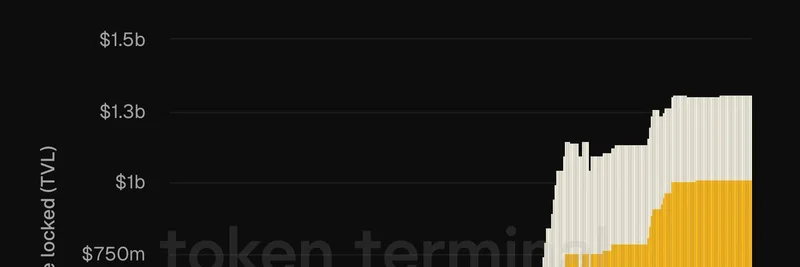Quick note on the contract address
This article focuses on the commonly referenced Echo Protocol (ticker: ECHO) in the BNB Chain ecosystem. However, the contract address you see on this page (0x6dcccc2b9a15ae0b2893d0ee00c3a07d30966f8b) does not match the most widely cited ECHO contract reported by third-party trackers. Always verify the token’s contract on trusted explorers like BscScan and compare it with official project channels before trading. The insights below cover Echo Protocol’s design, utilities, and market context on BNB Chain at a high level.
What is Echo Protocol (ECHO)?
Echo Protocol is a DeFi infrastructure layer built to bring fragmented Bitcoin (BTC) liquidity into one unified experience. It aims to make BTC work more smoothly in DeFi, whether your BTC is native, liquid-staked (LSTs), or wrapped (like wBTC).
If you’re new to the terms:
- Wrapped BTC (wBTC) is BTC represented on other chains so it can be used in DeFi apps.
- Liquid Staking Tokens (LSTs) are tokens you receive when you stake an asset (here, BTC via various systems) and still want liquidity and yield opportunities.
Echo Protocol issues a unified representation of BTC that’s easier to deploy across DeFi, while offering yield tools and transparency safeguards.
How Echo Protocol works
Unified BTC access
Deposit different BTC forms (native BTC, BTC LSTs, and wrapped BTC) and interact with DeFi using a single, unified asset. This reduces friction across apps and chains.BTC Layer 2 integrations
Echo integrates with Bitcoin Layer 2 solutions like Babylon, BSquared, and Bitlayer. It also supports a variety of BTC LSTs (e.g., PumpBTC, LBTC) and wrapped BTC (e.g., wBTC, fBTC). New to Bitcoin L2s? Here’s a simple primer on Bitcoin Layer 2s.Proof-of-Reserve transparency
Echo employs a Proof-of-Reserve approach to verify that assets backing its unified BTC are fully accounted for. This is a public, auditable way to check that liabilities match on-chain reserves.Yield layer and strategies
Echo’s yield tools are designed to help users find risk-adjusted returns. Strategies include:- Leveraged liquid staking
- Lending/borrowing loops
- eMSTR (leveraged BTC exposure engineered to mitigate liquidation risk)
CeDeFi integrations
Echo can plug into custodial services (like Ceffu) to enable stable, additional yield avenues. This “CeDeFi” blend combines centralized custody with decentralized strategies to broaden yield sources.Building a BTCFi hub
Echo positions itself as a BTCFi hub, aiming to make Bitcoin’s liquidity more productive across the Move ecosystem and beyond.
If you’re curious about the underlying networks, the token is active on the BNB Smart Chain (BEP20) among others, which helps reduce fees and speed up transactions compared to Bitcoin’s base layer.
Market snapshot (as of Oct 21, 2025)
- Price: ~$0.032257
- 24h volume: ~$3.19M
- Unlocked circulating supply (UCS): ~638.85M ECHO
- Unlocked market cap (UMC): ~$20.6M
- Performance vs. BNB: Declined over the past month
These figures are approximate and can change quickly. Always double-check live data on reputable trackers.
Important distinction: Another “Echo” acquired by Coinbase
Don’t confuse Echo Protocol (the ECHO token project) with a separate fundraising platform called “Echo” that Coinbase acquired on Oct 21, 2025. That Echo, founded by Jordan Fish (Cobie), focuses on democratizing on-chain fundraising and public token sales (via a product called Sonar). It’s unrelated to Echo Protocol’s BTC liquidity aggregation mission. You can learn about Coinbase at coinbase.com, but remember these are two different “Echo” entities.
Where to track and trade ECHO on BNB Chain
GMGN.AI
For fast token discovery and meme coin analytics, GMGN.AI offers smart money tracking, risk checks (like honeypots and high taxes), and automated trading via Telegram. Start with ECHO’s page here: https://gmgn.ai/bsc/token/fV1R5sZ5_0x6dcccc2b9a15ae0b2893d0ee00c3a07d30966f8bOther options
- Check listings and market data on aggregators like CoinMarketCap for pricing and pairs.
- Explore popular BNB Chain DEXs (e.g., PancakeSwap) when liquidity is available, but always confirm the contract address first.
Pro tips:
- Verify the contract on BscScan before swapping.
- Start with small test trades to validate slippage and taxes.
- Use platforms that surface wallet behaviors and security flags to avoid traps.
Key risks to consider
Contract confusion
Multiple tokens can share similar tickers. Always match the exact contract. The address on this page is not the most commonly cited ECHO address in public trackers, so extra diligence is warranted.Smart contract and strategy risk
Leveraged yield strategies and DeFi integrations carry technical and market risks. Upgrades, exploits, or extreme volatility can impact returns.Custodial/bridge dependencies
CeDeFi integrations and cross-chain bridges introduce counterparty and operational risks. Review custody arrangements and Proof-of-Reserve disclosures.Liquidity fragmentation
Even with aggregation, liquidity can be spread across L2s, LST issuers, and wrapped assets. This can affect slippage and execution quality.
Resources for deeper learning
- BNB Smart Chain overview: BNB Smart Chain (BEP20)
- Bitcoin LSTs explained: Bitcoin Liquid Staking Tokens (LSTs)
- What is wBTC?: Wrapped Bitcoin (wBTC)
- Bitcoin Layer 2 basics: Bitcoin Layer 2s explained
- Proof-of-Reserve primer: Proof-of-Reserves overview
- What is BTCFi?: Intro to BTCFi
Bottom line
Echo Protocol aims to make BTC truly usable in DeFi by unifying fragmented liquidity, adding transparent reserves, and layering yield tools on top. If you’re exploring ECHO on BNB Chain, double-check the contract, use analytics-driven platforms to assess risk, and scale in thoughtfully as you learn how the BTCFi stack fits your strategy.



